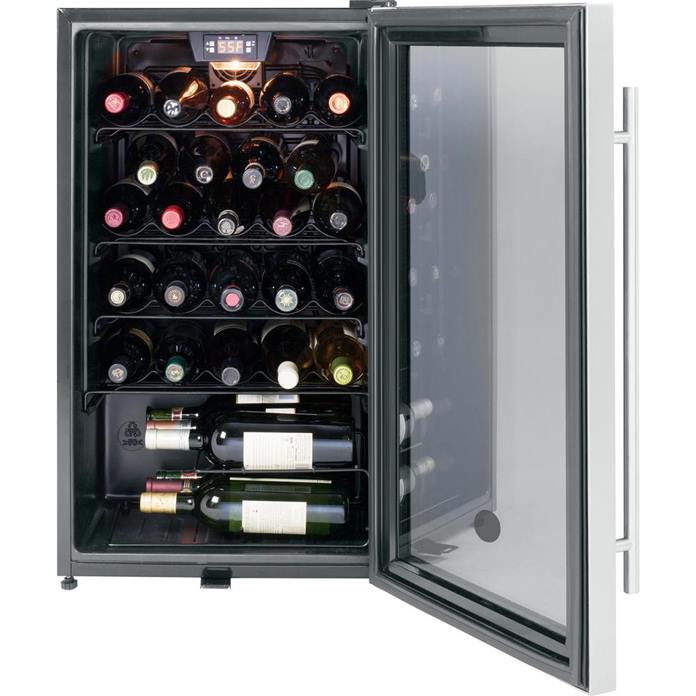
Down at the watering hole the other night, the subject of wine came up again. One of my companions quoted that tired old cliché that he prefers “red wine at room temperature”. I resisted the temptation to make an issue of it, but a moment’s thought reveals that the statement is nonsense. For a start, it implies that all red wine should be served at the same temperature which is simply not true. More importantly the temperature of a room depends on many variables, especially in this part of the world. As I am typing this, the temperature in my study – with all the windows open is about 33°C (91° F). Only a lunatic would drink wine as warm as that.
Wine temperature is critical. And before you protest about this being a subjective matter, remember that we are not talking about personal taste here, but how to taste the wine at its best. Experts agree that every wine has its optimum serving temperature. One of the biggest mistakes people make is drinking wine too warm, or more usually in these parts, too cold. Even the cheapest plonk taste better at the appropriate temperature.
Generally speaking, young or light-bodied wines taste better at lower temperatures whereas full-bodied wines are at their best several degrees higher. The “body” or “boldness” of the wine is the result of several factors including grape variety, climate, vintage, alcohol level and tannins. In case you’re wondering, tannins occur naturally in vines and in oak barrels and have a distinctive taste that makes your tongue feel dry. On the positive side, they add body and character and they’re most noticeable in red wines.
Right then, let’s be a bit more specific and start with some popular reds. If a full-bodied red is served too cold the tannins taste rough and unpleasant, the aromas lie hidden and the flavour feels unyielding. On the other hand, nothing ruins a red wine more quickly than serving it too warm. Full-bodied reds such as Cabernet Sauvignon, Syrah and Malbec are best at 16-17°C (61-63°F). You can include virtually all Bordeaux, Burgundy or Rhône in this category. In cold-climate areas such as Northern Europe, reds of this type are normally served at the prevailing ambient temperature. Medium-bodied reds such as Chianti and Valpolicella are best a little cooler at 13-15°C (55-59°F) and very light reds such as Bardolino, Lambrusco or Beaujolais taste freshest when they’re distinctly cool at 12°C (54°F). Rosé wines should always be well-chilled around 8°C (46°F).
White wines also range from full-bodied to light-bodied but unlike reds, they can also be sweet or dry. Whites invariably taste better when they’re chilled because warm white wine always feels flabby and dull. Full-bodied whites such hot-climate Chardonnay should be slightly chilled at 9-10°C (48-50°F) and lighter whites such as Orvieto, Pinot Grigio or Soave well-chilled at 8°C (47°F). Champagne and Prosecco along with many sweet wines taste best when they are decidedly cold at about 7°C (45°F) which is pretty well straight out of the fridge. Sherry is technically a white wine and it’s still a popular drink in the UK though almost everyone makes the mistake of serving it too warm. In its home country of Spain, it’s always well chilled to bring out the freshness. Don’t worry about serving white wine too cold, because in our tropical climate it’ll warm up all too quickly.
You’d be surprised at how rapidly this occurs. As an experiment, I checked the temperature of a Chilean Chardonnay straight out of the fridge. It was 3°C (37°F) and too cold for drinking. Having sloshed the wine into a decanter to aerate it, I then poured a sample. During this process, which took less than a couple of minutes the wine’s temperature shot up to 10°C (50°F) which as luck would have it, is just about right for Chilean Chardonnay. But then the glass of wine was left unattended for five minutes during which time the temperature increased to an amazing 15°C (59°F); far too warm to taste at its best. It was heating up at one degree Celsius – or roughly two degrees Fahrenheit – every sixty seconds. At a social occasion, the wine could be too warm before you reach the end of the glass, especially there’s the usual chok dee routine to endure before every swig. I should add that during my not-too-scientific experiment in the kitchen, the air-conditioner was off, because being half Scottish I tend to avoid reckless spending. In an air-conditioned room of course, the rise in temperature would be a little slower.
You can’t really check the temperature by sticking your finger in the glass, though with practice you can become quite proficient at estimating temperature. If you want to get it consistently right, buy a wine or cooking thermometer. Lazada has a good selection, including some cheap LCD bracelets that conveniently fit around bottles.
Although different wines should be served at different temperatures, all wines should be stored at the same constant temperature which is about 13°C (55°F). Unless you can afford an expensive wine storage cooler it’s probably unrealistic in this country to store wine at home. The sensible solution is probably to buy wine when you need it then stick it in the fridge before the bottle is opened. Then let the bottle rest in an ice-bucket containing water (and some ice if necessary) at roughly the right temperature. You can help white wine by serving it in cold glasses, but not so cold that your guests drop them in shock.
 |
 |
 |





